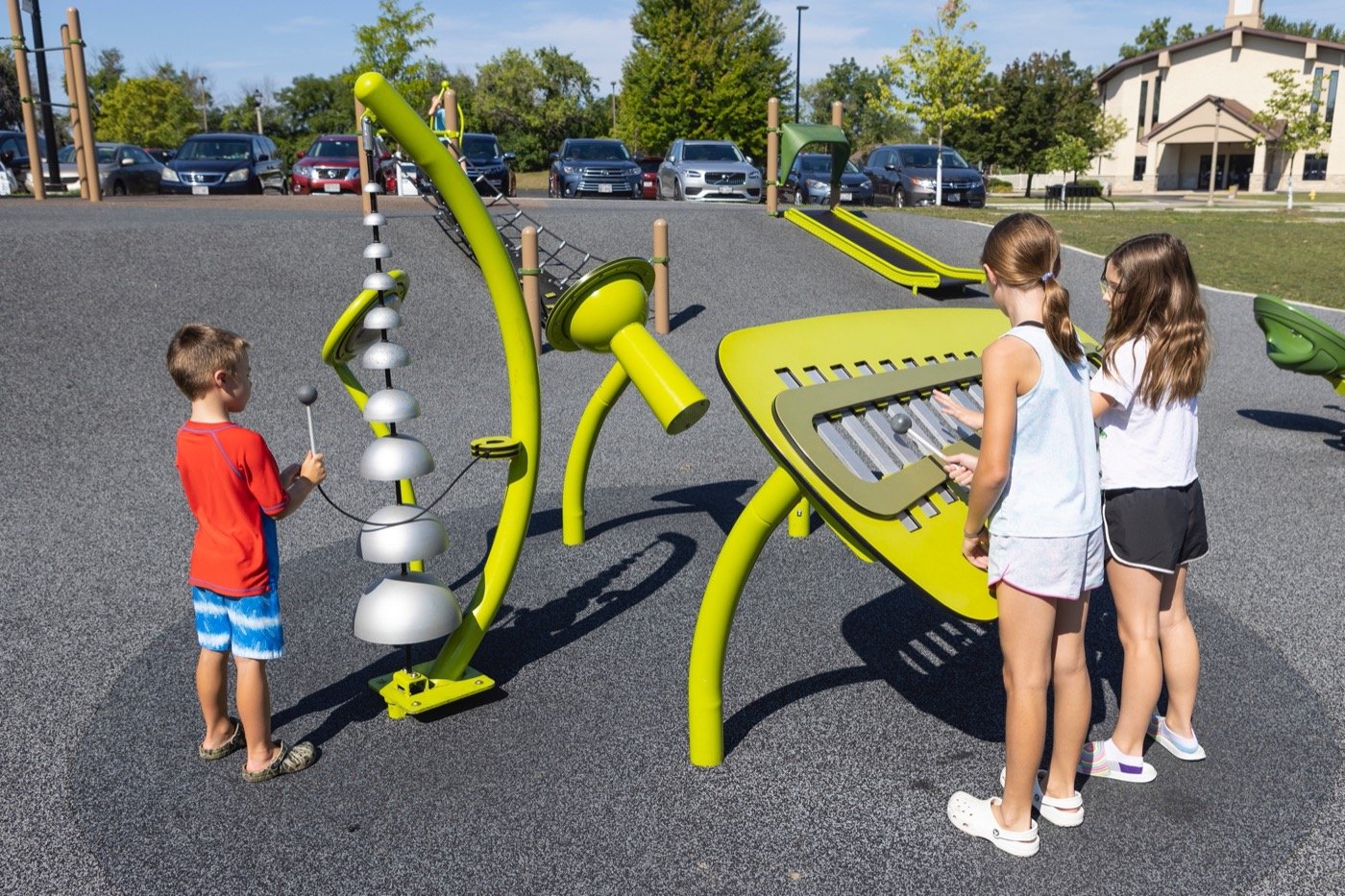Creating Inclusive Playground Experiences for Kids with Vision and Hearing Disabilities

presented by Landscape Structures
When children visit a playground, they not only engage in play but also learn vital social skills, experience independence and foster their overall development. However, for children with vision and hearing disabilities, the playground experience has often been limited. In the past, playgrounds focused primarily on orthopedic disabilities, leaving out a significant portion of the disabled community. Fortunately, with the efforts of inclusive play advocates and the implementation of inclusive design practices, playgrounds are undergoing a transformation to cater to the needs of children with vision and hearing disabilities.
The Americans with Disabilities Act (ADA) is often seen as the driving force behind making spaces more accessible. However, the focus when designing a playground tends to be on including access for those with mobility disabilities. But if a playground is only focused on orthopedic disabilities, it may not address the needs of people with other disabilities such as those related to vision and hearing.
Today, the focus on inclusive play is becoming more holistic and intentional. Playgrounds are being designed to ensure that children with vision and hearing disabilities can not only play but also feel comfortable accessing, orienting themselves and moving around in the play spaces.
Playgrounds are incorporating features to accommodate children with vision disabilities. Greater use of color and contrast helps children with low vision or blindness perceive and differentiate playground features. Color cues on steps enable kids to identify changes in elevation, while contrasting colors on balance beams enhance depth perception. Solid or tightly perforated surfaces aid children with low vision in identifying walkable areas.
Additionally, subtle additions such as tactile maps and sound elements like musical play panels or outdoor musical instruments assist blind and low-vision children in orienting themselves within the play space. Colored walkways, ground texture changes, and guide ropes provide further assistance in navigation.
Playground designs are also considering the unique needs of children with hearing disabilities. Open spaces and wide walkways facilitate sign language communication, which requires more space than spoken language. An open layout with an easy-to-reach high point overlooking the playground enhances spatial awareness for children with hearing disabilities, enabling them to “read” activities.
For children with cochlear implants, certain precautions are necessary. Plastic slides, which generate static electricity, can damage the device. Therefore, using slides made of rollers, concrete, or stainless steel ensures the safety and enjoyment of children with cochlear implants.
Outdoor musical instruments are great for children with hearing disabilities as well. Although these children may not hear the instrument, they can still engage with them through visual and tactile experiences, such as watching them shake or feeling them vibrate.
Innovation in playground design is key to providing an invitation for all children to play, learn, and grow together. By evolving playgrounds to address the needs of children with vision and hearing disabilities, we can create inclusive spaces where every child can have fun. The work of inclusive-play advocates, coupled with intentional design practices, ensures that playgrounds are becoming more accessible and inclusive, allowing children with vision and hearing disabilities to fully participate in the joys of play.

